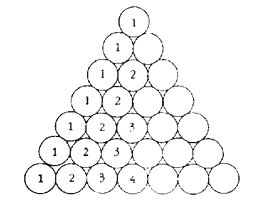 |
Science Frontiers ONLINE No. 88: Jul-Aug 1993 |
|
|
Bruised Apples
A serious problem has cropped up in supermarkets, where fresh, ripe apples are piled up high in beckoning pyramids. Surely, as the heights of the pyramids increase, the bottom-most apples will be crushed, particularly those in the center under the apexes. Common sense tells us that crushing forces will be greatest at Position #4 in the illustration.
 |
(Watson, A.; "The Perplexing Puzzle Posed by a Pile of Apples," New Scientist, p. 19, December 14, 1991.)
A theoretical analysis of the problem by J. Grindlay doesn't help much. He analyzed a two-dimensional pile of disks, as shown, and calculated that maximum bruising forces should occur at the outermost disks instead of at the center, (Grindlay, J.; "Bruised Apples," American Journal of Physics, 61:469, 1993.)
Comment. Thus, common-sense expectations, experimental measurements, and theoretical calculations lead to three different results. Much more work needs to be done here.